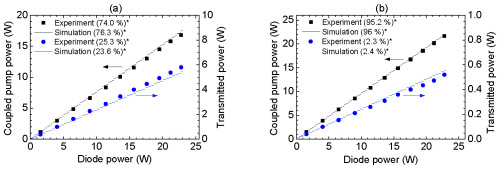The
2015 Ringier Technology Innovation Awards - Laser Industry is now open for
applications up until January 4, 2015.
Now
in its second year, the Awards consist of six categories: Lasers, Laser Systems for Production
Engineering (Laser Cutting Systems, Laser Engraving Systems, Laser Marking
Systems, and Laser Welding Systems), Laser System Components, System
Peripherals of Laser Production Engineering, Optical Materials and Components,
and 3D Printing. Only new products and solutions launched during 2013-2015 in
the China market are eligible to enter the Awards selection process.
Following
the entry and nomination stage, online peer voting and expert judging will take
place January 9-25, 2015. Industry experts, including Dichen Li, Ph.D.,
Changjiang Professor, Xi'an Jiaotong University; Xiahui Tang, Professor,
National Engineering Research Center For Laser Processing; Youliang Wang,
Chairman, Laser Processing Committee of China Optical Society; Xiao Zhu,
Chairman, Wuhan Laser Association of Optics Valley of China; and Qingmao Zhang,
Vice Chairman, Laser Processing Committee of China Optical Society, will be
among the independent panel of judges. Winners will be announced at the Awards
ceremony on March 18, 2015, to coincide with Laser World of PHOTONICS 2015 in
Shanghai, when all the winners, judges, industry professionals, and media will
be present.
Organized
by Industrial Laser Solutions China, Ringier Trade Media, and supported by
Industrial Laser Solutions, these Awards are presented to a select group of
innovators each year in China. The purpose of the Awards is to encourage,
acknowledge, and reward those individuals and companies who have introduced and
developed a new idea, a new methodology, a new product or a new technology for
manufacturing production efficiency, cost-effectiveness, and user convenience,
which might result in energy saving and more responsible clean manufacturing in
the laser industry.
The
Ringier Technology Industry Awards Series have been established since 2006 and
cover nine different industries. They are recognized as being the most honest,
transparent, and fairest of such Industry Awards in China. Nominations are open
to all and the final selections are made by the panel of independent judges
based solely on merit.
DK
Photonics – www.dkphotonics.com specializes
in designing and manufacturing of high quality optical passive components mainly
for fiber laser applications such
as 1064nm high power isolator, Cladding
Power Stripper, Multimode High Power Isolator, pump combiner,1064nm Band-pass
Filter,(6+1)X1 Pump and Signal Combiner, PM Circulator, PM Isolator, optical
Coupler. More information, please contact us.












